| Trip to Noto and Kanazawa
Dec. 21-23th,2003
| On the 21st, my wife and I left Tokyo by super express train' MAX Toki 311' to Echigo-yuzawa, and transfer to ' Hakutaka 6' at there to get to Kanazawa. The mountain area was fully covered with a lot of snow. (Photo right)
We arrived at Kanazawa at13:01.The temperature was 5 deg. C, and there was no snow in the city.
We had lunch at a restaurant in the station building and took a bus leaving at 14:30 to Wajima. It takes 2 hours from Kanazawa to Wajima.
|
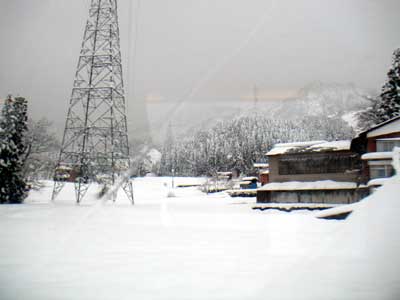 |
|
We got off the bus at the stop in front of the lacquered ware museum and walked about 10 minutes to go to the evening market in the Sumiyoshi shrine. But it was already too late and only three shops were busy in packing their products.
Unlike a famous morning market in Wajima, which many tourists visit for that, the evening market was looked to be very simple because it is only for the local people. Taking a walk slowly on the main street of the city to the Koshuen that we stay tonight, the pedestrian traffic was almost zero although it was 5 o'clock in the evening yet.
|
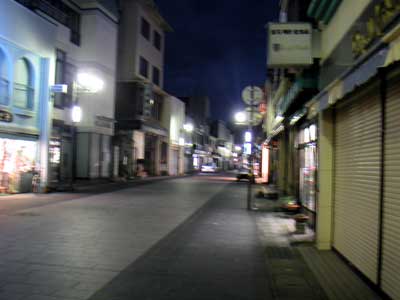
|
|
The Koshuen hotel is the first or second biggest inn in Wajima, so we were welcome by the 7-8 persons of staff who were lining up all in a row in the entrance hall.
Supposing that rooms were vacant because of off-season, our room was very large with 2 rooms continuance and the Sea of Japan was looked at from the window even though it was an economy package trip.
The hot spring was explained to contain sodium chloride and be good to neuralgia and muscular ache, although it has smelling of bleaching powder regrettably.
|
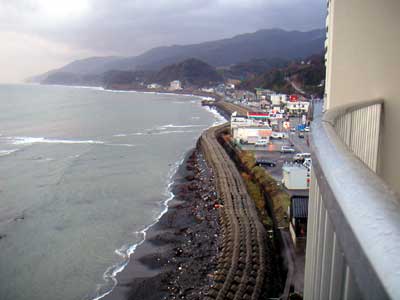 |
|
The dinner served in the room, including sashimi of fresh cuttlefish and shrimp of the season were very delicious. There was a special meal cooked by skilled chief cook, MORIEDA Hiroshi, who has challenged in "the iron man of cooking" TV program, that was an American eggplant stuffed with hot gratin.
|
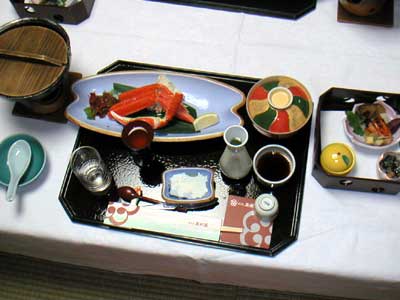 |
 |
<Chicken in Jibu-ni style and the eggplant with gratin by iron man cooking>
|
 |
 |
@
|
The next day, we took HotelŐs bus service to the morning market after breakfast.
It started rain when the bus arrived at the market.
They sell steamed abalone in the morning market, a special product of Wajima, but the price was also special that 4000 yen/100 gram.
|
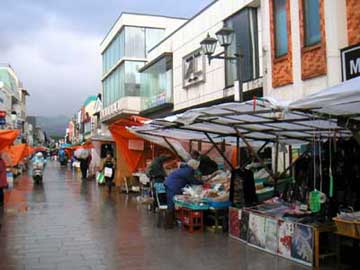 |
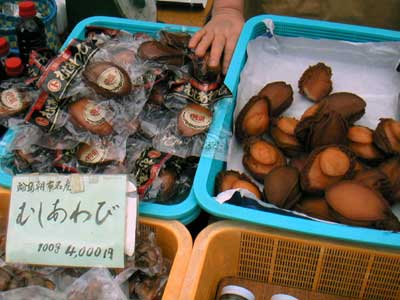 |
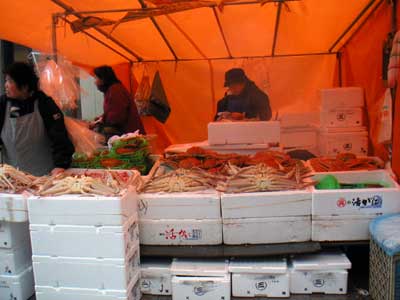 |
 |
Rain has become strong occasionally, then we finished shopping and took one hour earlier bus to go back quickly to Kanazawa.
On the way back to Kanazawa, the bus went along the Japan sea. It was cold and cloudy typical winter scenery of Japan seaside.
|
| Entering into Kanazawa-shi, we got off the bus at Kenroku. There we could see the trees with each of branch was beautifully hang by a lot of cables to avoid damage or deformation which may be caused by snow. There were not so many tourists since it was the weekday and we walked through out the garden. We took lunch in the restaurant inside the Ishikawa Kousei-nenkin hall where stay, because the garden is right away the next door. We continued the sightseeing according to the recommendation of the information office of the Kanazawa station and appreciated many of the culture and objects of art of local traditional craftwork in the museum of Kutani porcelain, Wajima lacquered ware, Kaga-yuzen silk textile, and Japanese paper etc. After becomes in the evening and the art museum has closed, we went to Kourinbou where is a shopping quarter and purchased the chopsticks of Wajima lacquered ware. |
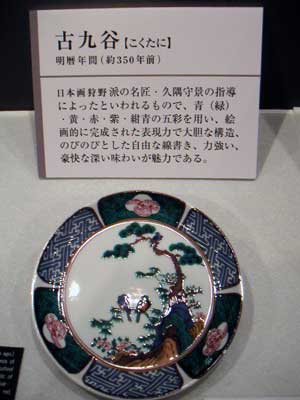 |
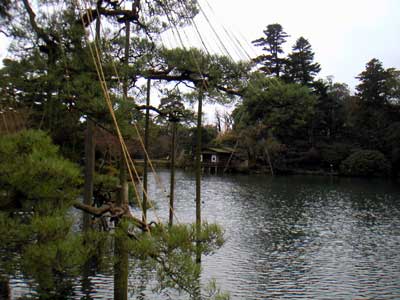 |
 |
 |
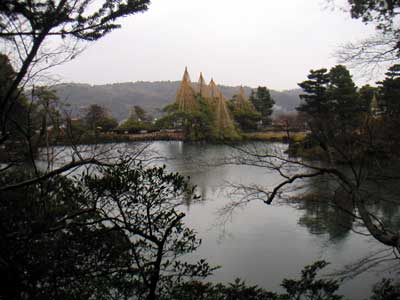 |
| We had dinner at local food restaurant. I ordered some shrimps and flatfish for sashimi and boiled crabs, roasted fish too.
|
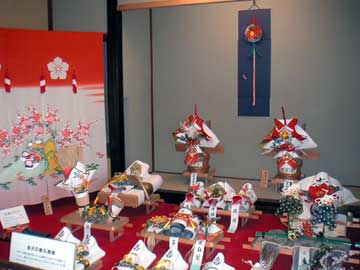 |
 |
|
On the 23rd, We started with small private museum of paper craft. It is called "Mizuhiki" and used as decoration for wedding materials.
Then we went to the samurai house street at Nagamachi.
There we could find a local volunteer guide called "Maido-san" wearing a yellow coat. She explained us in detail about the house, town, water supply system and the life of samurai.
|
 |
 |
 |
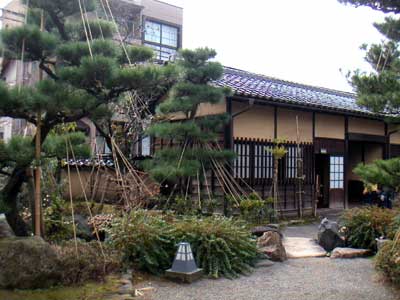 |
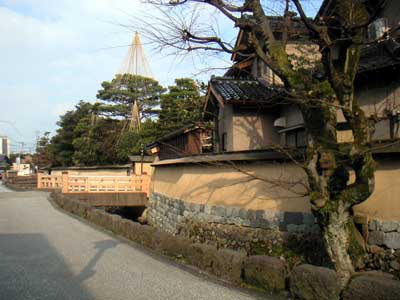 |

On the 23rd, We started with small private museum of paper craft. It is called "Mizuhiki" and used as decoration for wedding materials.
Then we went to the samurai house street at Nagamachi. There we could find a local volunteer guide called "Maido-san" wearing a yellow coat. She explained us in detail about the house, town, water supply system and the life of samurai.
[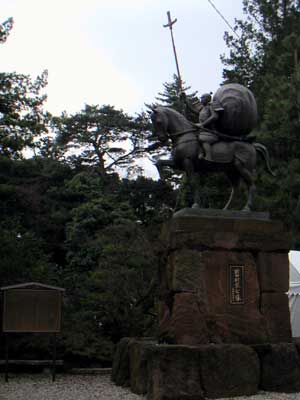
[
Going to the Oumi-cho market because it passed 1 o'clock to have sushi for the lunch. Of course we bought a crab and some fresh seafood at the market for the dinner of the night. We returned to Tokyo with a lot of memories of enjoying the arts and crafts this time.
=> To Outing TOP
|
|
























